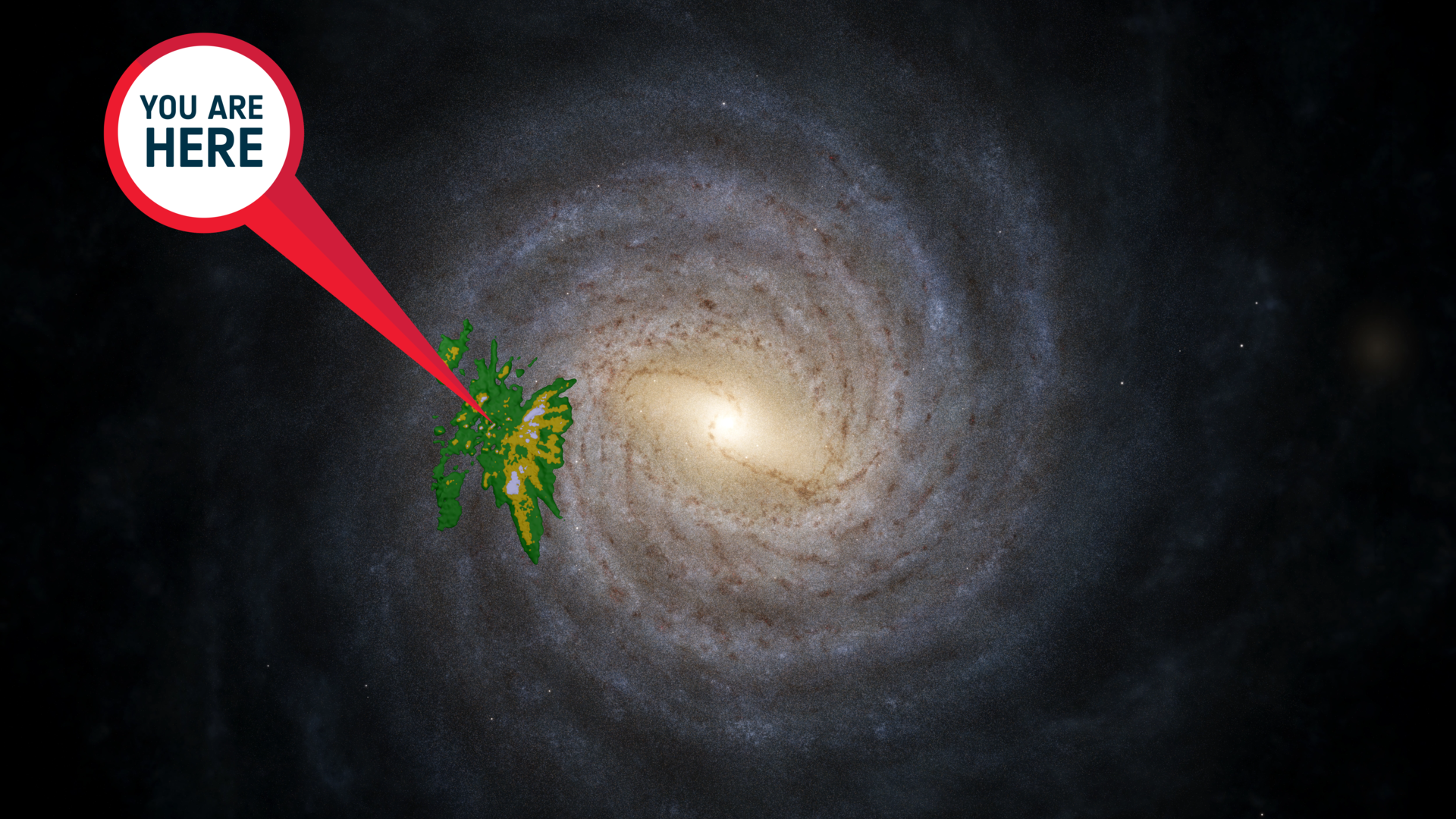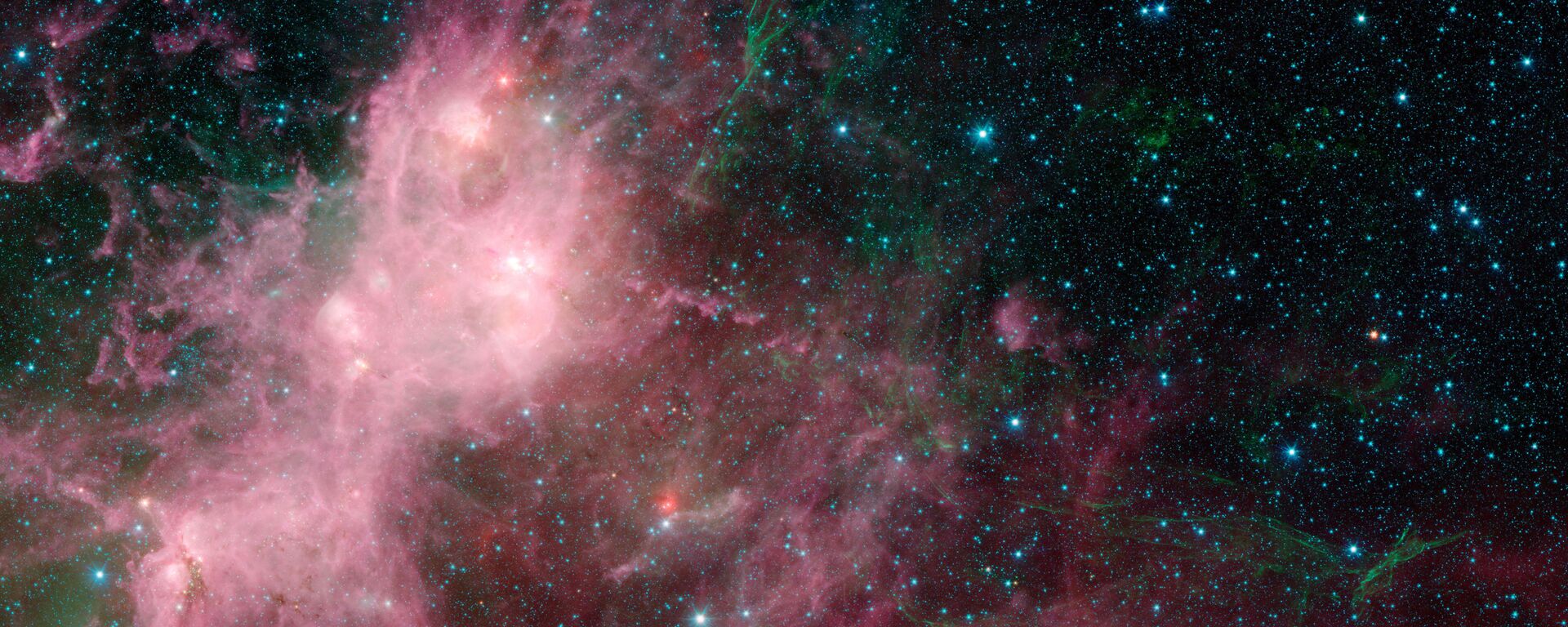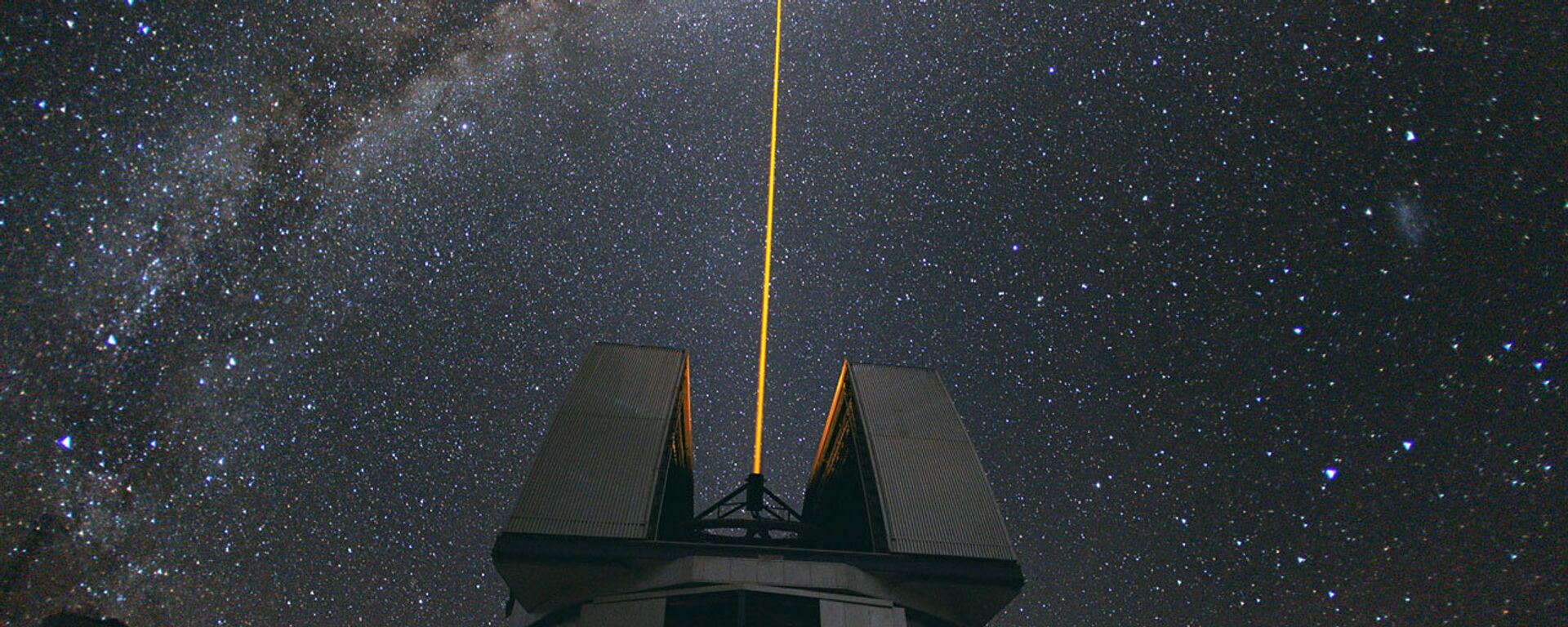https://sputnikglobe.com/20220614/videos-esa-releases-trove-of-gaia-data-on-milky-way-including-starquakes--stellar-dna-1096289675.html
Videos: ESA Releases Trove of Gaia Data on Milky Way, Including 'Starquakes' & 'Stellar DNA'
Videos: ESA Releases Trove of Gaia Data on Milky Way, Including 'Starquakes' & 'Stellar DNA'
Sputnik International
Gaia's mission is to develop the most detailed and complete multi-dimensional map of our galaxy, allowing scientists to better comprehend the life cycle of... 14.06.2022, Sputnik International
2022-06-14T01:24+0000
2022-06-14T01:24+0000
2023-04-12T16:57+0000
science & tech
galaxy
european space agency (esa)
map
astronomy
astronomers
milky way
space
https://cdn1.img.sputnikglobe.com/img/07e6/06/0e/1096291134_0:402:1920:1482_1920x0_80_0_0_209c1253b539c67c5ed852dfc2454a6f.png
The European Space Agency (ESA) released data on Monday on nearly two billion stars in the Milky Way gathered by its Gaia mission to produce the most precise and complete image of our galaxy. According to the agency's news release, the data will be used by astronomers to better understand how stars form and die, as well as how the Milky Way developed over billions of years. New information on the age, mass, temperature, and chemical makeup of stars is included in the new data.This is said to be the third release of Gaia's data, and much of the information contained in it came from freshly-disclosed spectroscopic data, which is a technique for splitting starlight into its constituent colors. Special subgroups of stars, such as those that alter brightness over time, are also included in the data. Probably one of the most interesting findings of the trove is related to so-called 'starquakes.' Gaia was able to detect over 100,000 starquakes, which the ESA compared to huge tsunamis that ripple across stars. According to astrophysicist Conny Aerts, cited in the release, these allow scientists to calculate the density, internal rotation, and temperature of stars. In thousands of stars, Gaia discovered intense nonradial starquakes. The mission also discovered unusual vibrations in stars that had never been observed before. According to existing theory, these stars should not have any quakes. However, Gaia detected them on their surface.Apart from that, the new data also includes the world's largest collection of binary stars - stars orbiting a common center of mass - thousands of solar system objects such as asteroids, moons, and planets, and millions of galaxies.It was also discovered that certain stars in our galaxy are comprised of old material left over from the origin of our universe, while others are made of elements from previous generations of stars: stars closer to the galaxy's center and plane have more heavy metals than stars further out. Gaia also classified stars that came from other galaxies.Some stars have a higher proportion of heavy metals than others. According to the ESA, only light components were generated during the Big Bang, such as hydrogen and helium. All other heavier elements, which astronomers refer to as metals, are created inside stars. When stars die, these metals are released into the interstellar medium, which is made up of gas and dust between the stars and from which new stars develop. Metal-rich environments will result from active star development and death. The chemical composition of a star can therefore be considered something like its 'DNA', providing essential information about its origin, the astronomers noted.Monday's release contains several scientific papers published in the journal Astronomy & Astrophysics.Despite the fact that it has only collected data on around 1% of the Milky Way's estimated number of stars, the mission is already generating around 1,600 scientific articles every year, according to experts. Project scientist Timo Prusti said in the news release that the sheer quantity of stars examined increases the chances of scientists making extremely unusual findings.
https://sputnikglobe.com/20220609/astronomers-detect-weird-radio-frequency-radiation-burst-from-galaxy-far-away-1096136273.html
https://sputnikglobe.com/20220612/astronomers-may-have-just-identified-the-first-ever-star-free-drifting-black-hole-1096232583.html
milky way
Sputnik International
feedback@sputniknews.com
+74956456601
MIA „Rossiya Segodnya“
2022
News
en_EN
Sputnik International
feedback@sputniknews.com
+74956456601
MIA „Rossiya Segodnya“
Sputnik International
feedback@sputniknews.com
+74956456601
MIA „Rossiya Segodnya“
science & tech, galaxy, european space agency (esa), map, astronomy, astronomers, milky way, space
science & tech, galaxy, european space agency (esa), map, astronomy, astronomers, milky way, space
Videos: ESA Releases Trove of Gaia Data on Milky Way, Including 'Starquakes' & 'Stellar DNA'
01:24 GMT 14.06.2022 (Updated: 16:57 GMT 12.04.2023) Kirill Kurevlev
Managing Editor
Gaia's mission is to develop the most detailed and complete multi-dimensional map of our galaxy, allowing scientists to better comprehend the life cycle of stars and examine the Milky Way's structure, history, and maybe the future.
The European Space Agency (ESA) released data on Monday on nearly two billion stars in the Milky Way gathered by its Gaia mission to produce the most precise and complete image of our galaxy.
According to the agency's
news release, the data will be used by astronomers to better understand how stars form and die, as well as how the Milky Way developed over billions of years. New information on the age, mass, temperature, and chemical makeup of stars is included in the new data.
This is said to be the third release of Gaia's data, and much of the information contained in it came from freshly-disclosed spectroscopic data, which is a technique for splitting starlight into its constituent colors. Special subgroups of stars, such as those that alter brightness over time, are also included in the data.
Probably one of the most interesting findings of the trove is related to so-called 'starquakes.'
Gaia was able to detect over 100,000 starquakes, which the ESA compared to huge tsunamis that ripple across stars. According to astrophysicist Conny Aerts, cited in the release, these allow scientists to calculate the density, internal rotation, and temperature of stars.
“Starquakes teach us a lot about stars, notably their internal workings. Gaia is opening a goldmine for ‘asteroseismology' of massive stars,” Aerts said.
In thousands of stars, Gaia discovered intense nonradial starquakes. The mission also discovered unusual vibrations in stars that had never been observed before. According to existing theory, these stars should not have any quakes. However, Gaia detected them on their surface.
Apart from that, the new data also includes the world's largest collection of binary stars - stars orbiting a common center of mass - thousands of solar system objects such as asteroids, moons, and planets, and millions of galaxies.
It was also discovered that certain stars in our galaxy are comprised of old material left over from the origin of our universe, while others are made of elements from previous generations of stars: stars closer to the galaxy's center and plane have more heavy metals than stars further out. Gaia also classified stars that came from other galaxies.
Some stars have a higher proportion of heavy metals than others. According to the ESA, only light components were generated during the Big Bang, such as hydrogen and helium. All other heavier elements, which astronomers refer to as metals, are created inside stars.
When stars die, these metals are released into the interstellar medium, which is made up of gas and dust between the stars and from which new stars develop. Metal-rich environments will result from active star development and death. The chemical composition of a star can therefore be considered something like its 'DNA', providing essential information about its origin, the astronomers noted.
"Our galaxy is a beautiful melting pot of stars," Alejandra Recio-Blanco, who is also a member of the Gaia collaboration, is quoted as saying. "This diversity is extremely important, because it tells us the story of our galaxy’s formation. It reveals the processes of migration within our galaxy and accretion from external galaxies. It also clearly shows that our Sun, and we, all belong to an ever changing system, formed thanks to the assembly of stars and gas of different origins."
Monday's release contains several scientific papers published in the journal
Astronomy & Astrophysics.
Despite the fact that it has only collected data on around 1% of the Milky Way's estimated number of stars, the mission is already generating around 1,600 scientific articles every year, according to experts. Project scientist Timo Prusti said in the news release that the sheer quantity of stars examined increases the chances of scientists making extremely unusual findings.
"Unlike other missions that target specific objects, Gaia is a survey mission. This means that while surveying the entire sky with billions of stars multiple times, Gaia is bound to make discoveries that other more dedicated missions would miss. This is one of its strengths, and we can’t wait for the astronomy community to dive into our new data to find out even more about our galaxy and its surroundings than we could’ve imagined," he said.



